 How to teach toys to kids learning English?
How to teach toys to kids learning English?
Below are a few useful teaching points and ideas taken from our free Toys lesson plan.
Teaching points / tips
Here are a few fun activities you can do in your lesson based on the toys theme:
Play “Hide and Find”
Let’s start off with a fun game. Before the class, hide the following toys around the classroom (under chairs, in bookshelves, etc.): teddy bear, doll, blocks, robot, puppet, book, ball, balloon. You can also add some more toys to this list if you wish. Also, make sure you have printed the same flashcards as they toys you have hidden. You will need at least one toy per student (if you have a lot of students you can use multiple blocks, balls and balloons, so that each student has at least one toy to find).
Have all of your students sit down. Give each one a toy flashcard and tell them that hidden around the room are some toys which they have to find. Model the activity, by showing one toy flashcard (e.g. a picture of a doll) – wander around the room looking in different places until you have found a toy doll. Now, let everyone get up and search around for their toy and then sit down again in their place with the toy.
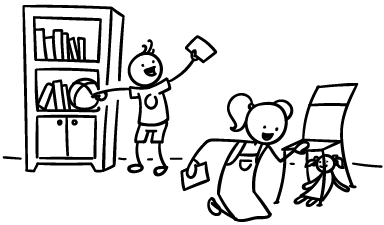
Once all the toys have been found go around the class and have each student hold up the toy they have found. For each toy say and chorus the toy word (e.g. Teacher: “a ball”; Students “a ball”).
Next, collect up the flashcards and get each student to hide their toy again – but in a different place. Now, give out the flashcards again, but make sure each student has a different toy flashcard to the one they had before. Let everyone go off to search for their toy, and as before, chorus each toy once they have all been found.
You can play this game a few times but finish before your students start to lose interest.
Play “Shout it Out”
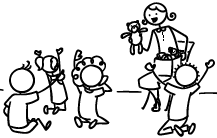 Have all of your students sit down. Start by holding up each toy and eliciting, chorusing and passing the toy around (when passing make sure each student says the word for the toy as they pass it).
Have all of your students sit down. Start by holding up each toy and eliciting, chorusing and passing the toy around (when passing make sure each student says the word for the toy as they pass it).
Next put all of the toys in a box and have everyone close their eyes. Pull out a toy and say “Open your eyes” – everyone must open their eyes and shout out the word for the toy that you are holding. Play this for all of the toys.
Play “Fetch it”
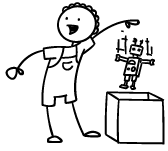 Throw all of the toys around the classroom and place a box at the front of the class. Say to one student “Please fetch the robot”. That student gets up, goes to the robot, picks it up and takes it over to the box and drops it in. Then have a different student for another toy. Keep going until all of the toys are in the box.
Throw all of the toys around the classroom and place a box at the front of the class. Say to one student “Please fetch the robot”. That student gets up, goes to the robot, picks it up and takes it over to the box and drops it in. Then have a different student for another toy. Keep going until all of the toys are in the box.
Play “Musical Circle Touch”
Sit all of your students in a circle and place the toys in the center of the circle. Play some music and have students pass a ball or bean bag around the circle. Stop the music. Say to the student holding the ball “Touch the teddy bear!” – and the student does so. Start playing the music and do the same thing so that all of your students have touched a toy.
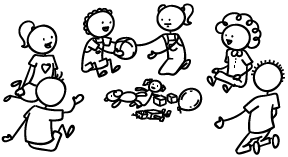
Play “Feel in the box”
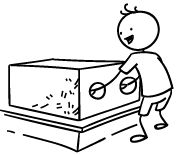 This is a fun activity. You will need a big box with two round holes two holes cut in it – big enough for your students to put their arms in. Get everyone to close their eyes as you put a toy in the upturned box. Model first: put your arms through the holes and feel the toy. Pull a face to show you are feeling something and don’t know what it is. Then finally, look happy and say “It’s a puppet!” and lift up the box to show everyone what you have found.
This is a fun activity. You will need a big box with two round holes two holes cut in it – big enough for your students to put their arms in. Get everyone to close their eyes as you put a toy in the upturned box. Model first: put your arms through the holes and feel the toy. Pull a face to show you are feeling something and don’t know what it is. Then finally, look happy and say “It’s a puppet!” and lift up the box to show everyone what you have found.
Let each student have a go. Also, a great idea is to also add some other objects that students have studied in a previous lesson (e.g. a crayon, plastic fruit, plastic animals, etc.) – this will add an element of surprise and allow for vocab review.
Additional Activities
Why not try adding these to your lesson from our website?
- download our practice worksheet “Fun with toys!“.
- download our homework worksheet “Toys Match and Color!“.
- download our toys flashcards to use in this this lesson.
- download our toys-themed classroom reader “Toys Play Time“.
Full Lesson Plan
Download and print our full Toys lesson plan from our lesson plans page.
Includes 8 flashcards, 2 worksheets, a downloadable song and a classroom reader.



Hi,
Thank you so much for sharing creative ideas. The lesson plans are very helpful. My goal of becoming a better kindergarten teacher was made possible by your website. Keep up!